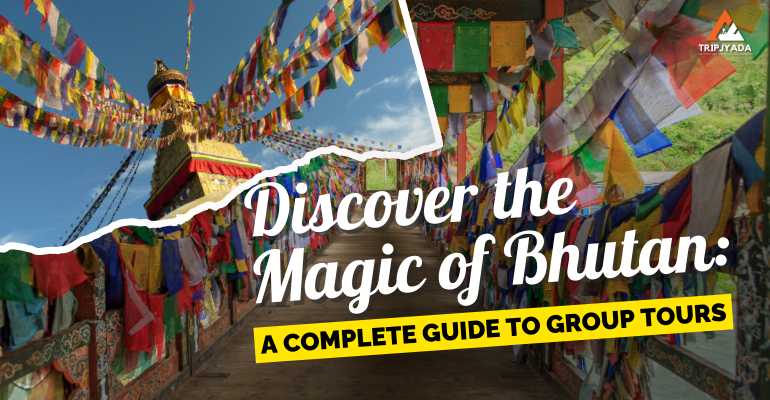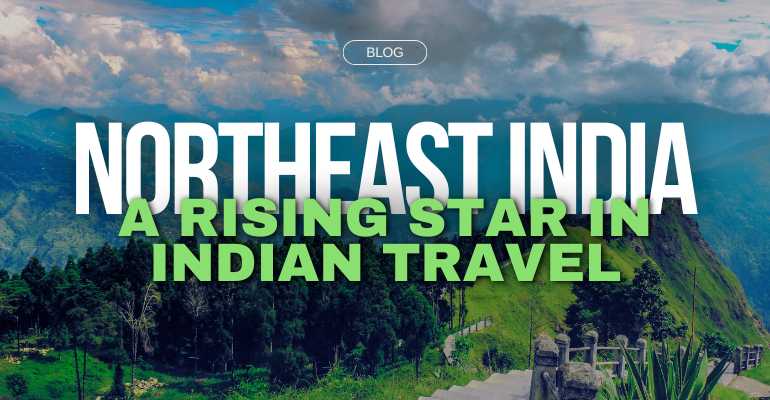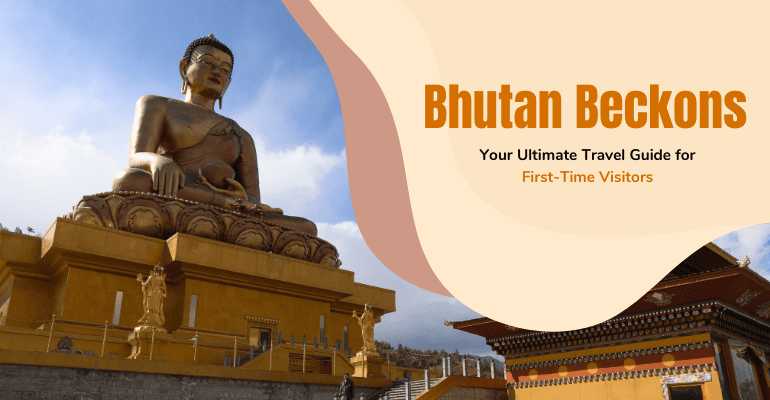Discover the Magic of Bhutan: A Complete Guide to Group Tours
Bhutan, the mystical kingdom nestled in the Himalayas, is a dream destination for many travelers. Unlike other Himalayan nations, Bhutan remains deeply committed to preserving its cultural heritage, environmental sustainability, and unique approach to measuring progress through Gross National Happiness. With its pristine landscapes, rich Buddhist heritage, and emphasis on Gross National Happiness, Bhutan offers an unparalleled experience. If you're looking to explore this fascinating country, opting for a group tour is one of the best ways to make the most of your journey. This guide will take you through everything you need to know about Bhutan group tours, from must-visit destinations to cultural experiences, local cuisine, and practical travel tips.
Why Choose a Group Tour for Your Bhutan Adventure?
Traveling in a group has numerous advantages, especially in a destination like Bhutan:
-
Cost-effectiveness: Group tours provide a budget-friendly way to explore Bhutan, as they typically include shared transportation, comfortable accommodations, guided experiences, and meals. This bundled pricing reduces individual costs, making it a more economical option compared to solo travel, where expenses such as transportation and lodging can add up quickly.
-
Expert Guides: Bhutan’s rich history, deep-rooted Buddhist traditions, and unique cultural practices are best explored with the help of knowledgeable guides. These experts not only provide historical context and fascinating stories but also offer insights into local customs, religious symbolism, and hidden gems that travelers might otherwise overlook. With their guidance, visitors gain a more meaningful and immersive experience, connecting deeply with Bhutan’s heritage and way of life.
-
Structured Itineraries: Group tours provide a carefully planned schedule, ensuring you visit all major attractions without the stress of organizing logistics. From historical landmarks to hidden gems, these itineraries are designed to offer a balanced mix of sightseeing, cultural experiences, and leisure time, making your trip seamless and fulfilling.
-
Social Experience: Traveling in a group allows you to meet like-minded adventurers, creating opportunities to form new friendships and share unforgettable moments. Whether it's hiking to Tiger’s Nest together, enjoying Bhutanese cuisine, or experiencing vibrant festivals, the camaraderie of a group enriches the journey and makes the experience even more memorable.
Must-Visit Destinations in Bhutan
Bhutan's diverse landscapes range from lush valleys and towering mountains to serene monasteries and historic fortresses. Each region offers a unique blend of natural beauty and cultural significance, making it essential to explore different bhutan travel packages of multiple locations during your visit.
1. Paro: The Gateway to Bhutan
Paro is where most travelers arrive, thanks to the country’s only international airport. Some must-visit sites include:
-
Tiger’s Nest Monastery (Taktsang): Perched on a cliff 3,120 meters above sea level, this monastery is Bhutan’s most iconic site.
-
Paro Dzong: A stunning fortress that serves as a monastic and administrative center.
-
National Museum of Bhutan: A great place to understand the country’s history and culture.
2. Thimphu: The Heart of Bhutan
Thimphu, the capital city, blends tradition with modernity. Here’s what you shouldn’t miss:
-
Buddha Dordenma: A massive golden Buddha statue offering panoramic views of the city.
-
Simply Bhutan Museum: A living museum showcasing traditional Bhutanese lifestyles.
-
Tashichho Dzong: The seat of the Bhutanese government and the King’s office.
3. Punakha: The Ancient Capital
A scenic drive from Thimphu brings you to Punakha, the former capital, famous for:
-
Punakha Dzong: A stunning fortress located at the confluence of the Pho and Mo Chhu rivers.
-
Dochula Pass: Offering breathtaking views of the Himalayas and adorned with 108 stupas.
Bhutan’s Monasteries and Spiritual Significance
Bhutan is home to some of the world’s most beautiful and spiritually significant monasteries, each offering a glimpse into the country's deep-rooted Buddhist traditions and breathtaking landscapes. These monasteries serve as centers of meditation, cultural preservation, and religious devotion, making them essential stops on any Bhutanese journey. Here are a few that should be on your list:
-
Tiger’s Nest Monastery (Paro): One of Bhutan’s most iconic landmarks, this sacred monastery is dramatically perched on a cliff 3,120 meters above sea level. The journey to Tiger’s Nest is a rewarding hike through pine forests, offering breathtaking views of the Paro Valley. Along the way, prayer flags flutter in the wind, adding to the spiritual ambiance. Once at the top, visitors can explore the monastery’s serene courtyards and meditation caves, gaining insight into Bhutan’s deep-rooted Buddhist traditions.
-
Kharbandi Gompa (Phuentsholing): This beautiful monastery is nestled in lush gardens and offers panoramic views of the Phuentsholing valley and the plains of West Bengal, India. Founded by the Royal Grandmother, it serves as a peaceful retreat where visitors can soak in the tranquil ambiance while admiring intricate Buddhist murals and statues. The monastery is a spiritual haven, providing insight into Bhutan’s deep-rooted religious traditions.
-
National Memorial Chorten (Thimphu): A revered site and an important landmark in Bhutanese spiritual life, this stupa was built in memory of the Third King, Jigme Dorji Wangchuck. Locals visit daily to circumambulate the chorten, spinning prayer wheels and offering prayers for peace and prosperity. Its golden spires and whitewashed walls stand as a testament to Bhutan’s rich Buddhist heritage, making it a must-visit for travelers seeking cultural and spiritual insight.
Bhutanese Festivals: A Cultural Extravaganza
Festivals in Bhutan are deeply rooted in the country’s Buddhist traditions and serve as vibrant expressions of faith, history, and community. These grand celebrations feature colorful masked dances, religious rituals, and social gatherings that bring locals and visitors together in a joyous atmosphere.
Timing your visit to coincide with a festival will give you an unforgettable experience. Some of the most popular festivals include:
-
Paro Tsechu: Held in spring, this vibrant festival is one of Bhutan’s most significant cultural celebrations. It features mesmerizing masked dances performed by monks and laymen, reenacting historical and religious stories. The festival is also an opportunity for locals to gather in their finest traditional attire, fostering a sense of community and devotion. The highlight of Paro Tsechu is the unveiling of the sacred Thongdrel (a giant religious scroll), which is believed to bless all who lay eyes on it.
-
Thimphu Tsechu: As one of Bhutan’s grandest festivals, Thimphu Tsechu attracts thousands of locals and visitors who gather to witness vibrant mask dances, religious performances, and age-old rituals. Held in the capital city, this festival is a significant spiritual and social event, where Bhutanese people dress in their finest traditional attire to celebrate and seek blessings. The festival serves as a vital platform for preserving Bhutan’s unique cultural heritage, offering visitors an unforgettable immersion into the country’s deep-rooted Buddhist traditions and festive spirit.
-
Punakha Drubchen: A grand festival that brings history to life, Punakha Drubchen re-enacts Bhutan’s 17th-century battles with the Tibetans, showcasing the bravery of Bhutanese warriors. This unique festival is renowned for its dramatic performances by local militia men dressed in traditional armor, depicting the legendary conflicts that secured Bhutan’s sovereignty. The festival is not only a tribute to Bhutan’s military history but also a spiritual event where prayers and rituals seek to bless the nation with continued peace and prosperity.
A Day in Thimphu: Exploring the Capital City
Thimphu, the vibrant capital of Bhutan, offers a harmonious blend of traditional culture and modern development. Nestled in the scenic valley along the Wang Chhu River, the city is the heart of Bhutan’s governance, spirituality, and commerce. Spending a day in Thimphu allows travelers to immerse themselves in the country's rich heritage while enjoying its contemporary comforts.
Morning: Embracing Bhutanese Spirituality
Begin your day with a visit to the National Memorial Chorten, a revered stupa built in memory of the Third King, Jigme Dorji Wangchuck. This spiritual landmark is a hub for local devotees who come daily to offer prayers and spin the large prayer wheels. It’s the perfect place to observe Bhutanese Buddhist traditions in action.
Next, head to the Buddha Dordenma, an enormous golden statue of Buddha towering over the city at 169 feet. Located atop a hill in Kuensel Phodrang Nature Park, the site offers breathtaking panoramic views of Thimphu Valley. The surrounding area is also ideal for a short morning walk, allowing you to take in the fresh mountain air and the peaceful ambiance.
Afternoon: Exploring Bhutanese Heritage and Culture
After a spiritual start to the day, explore Bhutan’s living culture at the Simply Bhutan Museum. This interactive museum showcases traditional Bhutanese lifestyles through exhibits, hands-on activities like butter tea making, and performances of folk dances.
For lunch, enjoy authentic Bhutanese cuisine at a local restaurant, sampling dishes like Ema Datshi (chilies and cheese) and Phaksha Paa (pork with radish and chilies). Bhutanese cuisine is rich in flavors, often featuring a delightful mix of spice and dairy.
Following lunch, visit the Folk Heritage Museum, which provides deeper insights into Bhutan’s rural way of life. The museum is a restored traditional farmhouse displaying household artifacts, farming tools, and textiles that offer a glimpse into Bhutanese traditions passed down through generations.
Evening: Discovering Bhutan’s Governance and Nightlife
As the day winds down, visit Tashichho Dzong, the impressive fortress-monastery that houses the King’s office and serves as the seat of the government. The Dzong, with its intricate woodwork and stunning courtyards, is especially enchanting in the evening when it is beautifully illuminated.
Wrap up your day in Thimphu with a relaxing dinner at a traditional Bhutanese restaurant or a café serving locally sourced organic food. If you're in the mood for some socializing, visit a local bar or lounge to experience Bhutan’s emerging nightlife scene, where you can enjoy live music and interact with friendly locals.
A day in Thimphu offers an enriching journey through Bhutan’s spirituality, culture, and history, making it a must-visit destination on any Bhutan group tour.
Bhutan’s Natural Wonders: From Dochula Pass to Punakha
Bhutan is known for its breathtaking landscapes and unspoiled nature, which play a crucial role in the country's appeal and commitment to ecological conservation. The nation’s pristine environment, protected through sustainable policies, offers travelers an unparalleled experience of the Himalayas' raw beauty.
-
Dochula Pass: Located at 3,100 meters, this pass offers panoramic Himalayan views and is adorned with 108 stupas, built in memory of Bhutanese soldiers.
-
Phobjikha Valley: A glacial valley known for the endangered black-necked cranes, which migrate here in winter. The valley is also a prime example of Bhutan’s dedication to wildlife preservation.
-
Haa Valley: A less-visited gem offering authentic rural Bhutanese experiences, surrounded by lush forests and traditional farmhouses that provide insight into Bhutan’s agrarian lifestyle.
These natural wonders not only enhance Bhutan’s scenic charm but also highlight the country’s commitment to maintaining its rich biodiversity and promoting eco-friendly tourism.
Bhutanese Cuisine: What to Eat on Your Tour
Bhutanese cuisine is a delightful mix of bold flavors, fresh ingredients, and traditional cooking techniques that reflect the country’s cultural heritage. Influenced by Tibetan, Indian, and Chinese cuisines, Bhutanese food is characterized by its generous use of chilies and cheese.
Must-Try Dishes:
-
Ema Datshi: The national dish of Bhutan, made with spicy chilies and local cheese, served with rice
.
-
Phaksha Paa: A hearty pork dish cooked with radishes, dried chilies, and sometimes spinach or mustard greens.
-
Jasha Maroo: A spicy and flavorful Bhutanese chicken stew with tomatoes, garlic, ginger, and chilies.
-
Hoentay: A unique dumpling from Haa Valley, filled with spinach, cheese, and buckwheat dough.
-
Red Rice: A staple of Bhutanese cuisine, red rice is grown in the fertile valleys and pairs perfectly with stews and curries.
Popular Snacks and Beverages:
-
Momos: Steamed dumplings stuffed with meat or vegetables, often served with a spicy tomato-based dipping sauce.
-
Suja (Butter Tea): A traditional drink made with butter, tea leaves, and salt, perfect for warming up in Bhutan’s chilly climate.
-
Ara: A locally brewed alcoholic beverage made from rice, maize, millet, or wheat, commonly enjoyed during festivals and celebrations.
-
Zow Shungo: A dish made from leftover vegetables and rice, reflecting Bhutan’s emphasis on minimizing food waste.
Bhutanese cuisine is an integral part of the bhutan tour package experience, offering visitors a taste of the country's deep-rooted traditions and culinary creativity. Whether you’re enjoying a bowl of steaming Ema Datshi or sipping on a warm cup of butter tea, every meal in Bhutan is a cultural experience in itself.
Packing Essentials for a Bhutan Trip
Packing for Bhutan depends on the season, but some essentials include:
-
Layered clothing: Weather can change quickly, so bring warm layers.
-
Comfortable hiking shoes: Especially for treks like Tiger’s Nest.
-
Sunscreen and sunglasses: The high altitude increases sun exposure.
-
Reusable water bottle: To stay hydrated while being eco-friendly.
Sustainable Tourism in Bhutan: How Group Tours Help
Bhutan is a pioneer in sustainable tourism, emphasizing environmental conservation, cultural preservation, and responsible travel. The country follows a "High Value, Low Impact" tourism policy, ensuring that visitor numbers remain manageable while maximizing positive contributions to local communities and the environment. Here’s how group tours contribute to this vision:
-
Controlled Tourism Policy: The government maintains a “High Value, Low Impact” approach to tourism, which ensures that visitor numbers are carefully regulated to protect Bhutan’s natural environment and cultural heritage. This policy mandates a minimum daily package fee for tourists, which includes accommodation, meals, and a sustainable development fee that directly contributes to conservation efforts and the well-being of local communities. By restricting mass tourism, Bhutan preserves its unspoiled landscapes, maintains its cultural integrity, and provides travelers with a more immersive and meaningful experience.
-
Environmental Conservation: Group travel significantly reduces individual carbon footprints through shared transport, such as buses or vans, minimizing fuel consumption and emissions. By traveling together, tourists help reduce traffic congestion and lessen the environmental impact compared to multiple solo travelers using separate vehicles. Additionally, many group tours prioritize eco-friendly accommodations, sustainable dining options, and responsible waste management practices, further contributing to Bhutan’s conservation efforts.
-
Support for Local Communities: Group tours play a crucial role in boosting the local economy by choosing locally owned accommodations, dining at traditional restaurants, and purchasing handicrafts from Bhutanese artisans. This not only provides direct financial support to local businesses but also helps preserve Bhutan’s unique cultural heritage by encouraging the continuation of traditional crafts and cuisine. Additionally, many group tours incorporate visits to rural villages, offering travelers the opportunity to engage with local communities, participate in cultural exchanges, and gain a deeper understanding of Bhutanese life.
Traveler Testimonials: Real Experiences from Bhutan Group Tours
Hearing from fellow travelers can inspire confidence in choosing a Bhutan group tour. Real-life experiences and insights from past visitors provide a glimpse into the unforgettable moments and seamless travel arrangements that make group tours on bhutan holiday packages a popular choice. Here are a few testimonials:
-
"The Bhutan tour was a life-changing experience. The itinerary was well-planned, and our guide was incredibly knowledgeable. I particularly loved visiting the Tiger’s Nest and experiencing the local festivals!" – Priya, India
-
"Being part of a group tour made everything seamless. From transportation to cultural insights, everything was taken care of. The views from Dochula Pass were unforgettable!" – Mark, USA
-
"I was initially hesitant about joining a group tour, but it turned out to be the best decision. The camaraderie among travelers and the guided experience made it truly special." – Sarah, UK
Conclusion: Why You Should Visit Bhutan with a Group Tour
Bhutan is an extraordinary destination that offers a unique blend of cultural richness, breathtaking landscapes, and sustainable tourism. Our Bhutan holiday packages allow you to immerse yourself fully in Bhutan’s magic without the stress of planning. With expert guides, seamless logistics, and a community of like-minded travelers, you can explore iconic monasteries, vibrant festivals, and stunning mountain scenery with ease. Whether you seek spiritual enrichment, adventure, or cultural immersion, a Bhutan group tour provides an enriching and hassle-free way to experience the Land of the Thunder Dragon. Opting for a group tour ensures you experience the best of Bhutan—its rich culture, stunning landscapes, and warm hospitality—without the stress of planning. Whether you’re a solo traveler looking for company or someone who enjoys structured travel, a Bhutan group tour is the perfect way to explore this enchanting kingdom.
Ready to embark on a journey to the Land of the Thunder Dragon? Pack your bags, join a group, and let Bhutan’s magic unfold before your eyes!





(0) Comments:
Leave a Reply